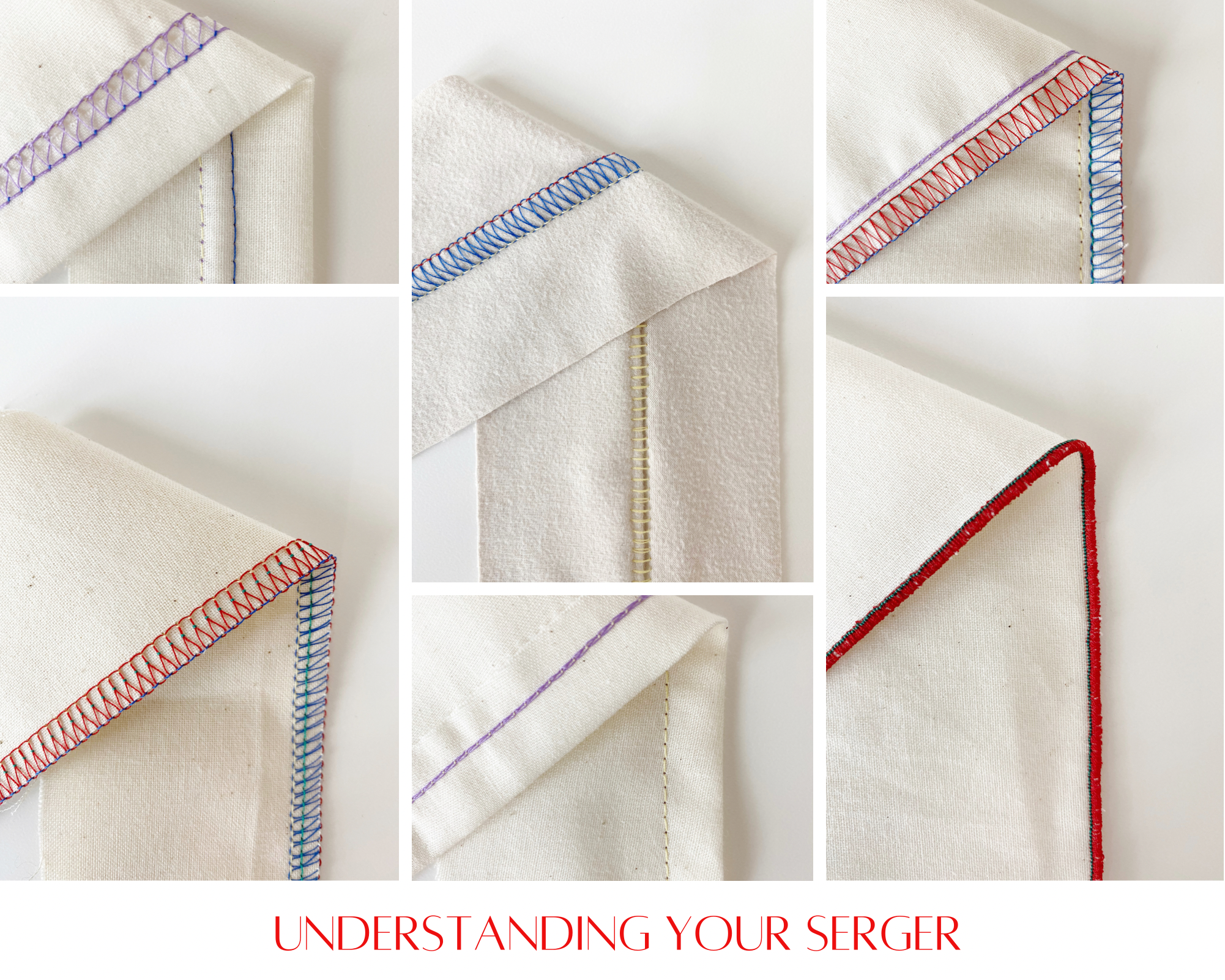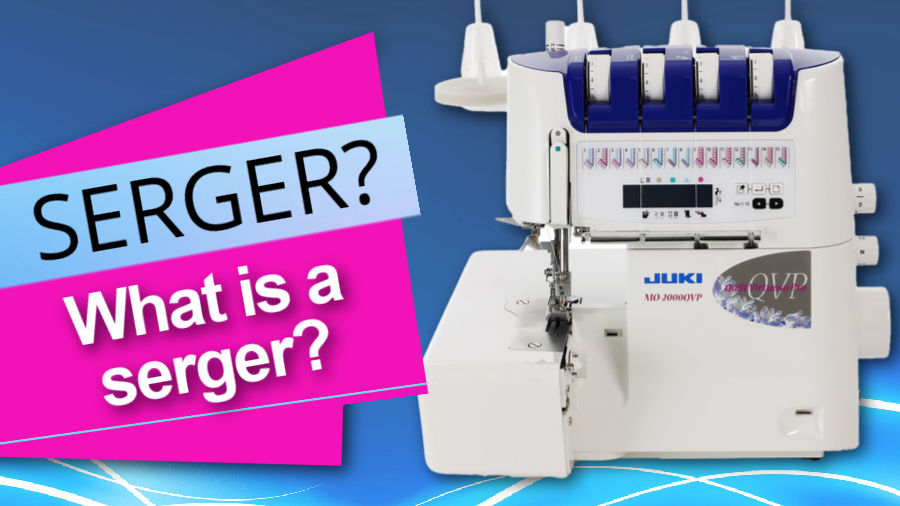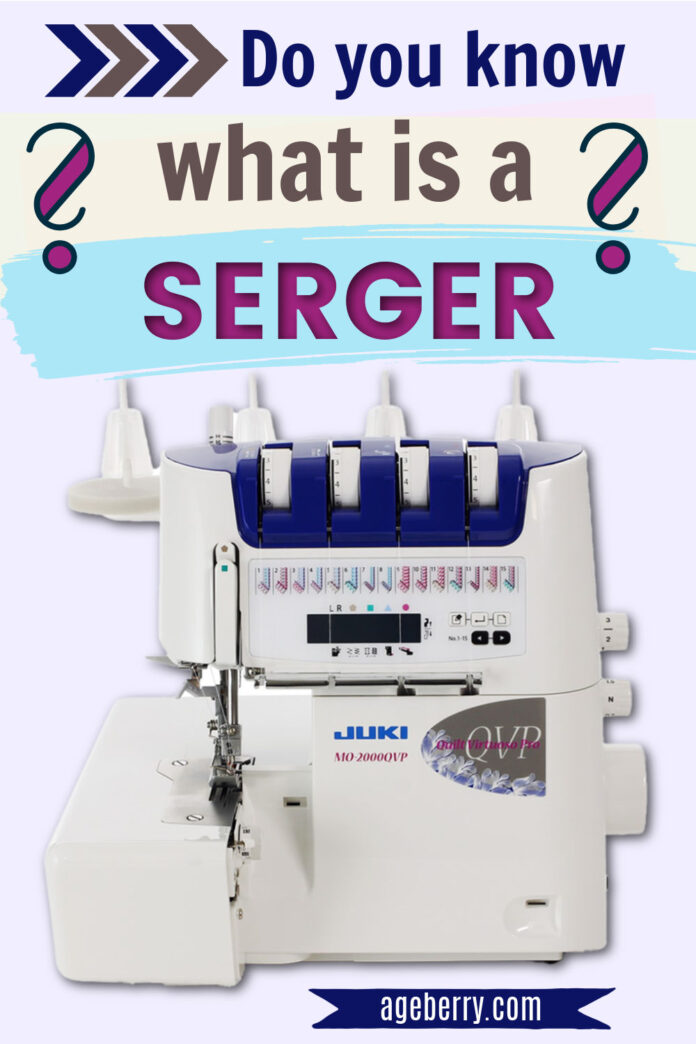A serger is a type of sewing machine that trims and overcasts fabric edges simultaneously. It creates professional-looking, neat seams.
If you are looking to take your sewing projects to the next level, a serger can be a game-changer. With its ability to finish raw edges, prevent fraying, and sew stretchy seams, a serger is a valuable addition to any sewing enthusiast’s toolkit.
Whether you want to work with woven or stretchy fabrics, a serger offers versatility and professional results. In this blog, we’ll explore the functions of a serger, its differences from a regular sewing machine, and whether it’s a necessary investment for your sewing projects. Let’s unravel the world of sergers and discover how they can enhance your sewing experience.

Credit: blog.treasurie.com
Introduction To Sergers
A serger, also known as an overlock machine, is a specialized sewing machine that is designed to efficiently finish fabric edges and seams. It trims excess fabric while sewing, creating a neat and professional finish.
Core Functions Of A Serger
- Finishing raw edges and seams
- Creating decorative edges
- Overcasting to prevent fraying
- Seaming and hemming simultaneously
Comparison With Traditional Sewing Machines
Sergers differ from traditional sewing machines in their ability to trim, overcast, and sew simultaneously, providing a finished look in a single pass. Unlike sewing machines, sergers use multiple threads to create strong, stretchable seams.
Key Features Of A Serger
A serger, also known as an overlock machine, is a versatile tool that offers a range of features to enhance your sewing projects. Let’s explore some of the key features that make a serger a valuable addition to your sewing arsenal.
Types Of Stitches
- Overlock Stitch:
- Cover Stitch:
- Flatlock Stitch:
Adjustable Settings
Sergers come equipped with various adjustable settings that allow you to customize your stitches to suit different fabrics and projects.
| Settings | Description |
|---|---|
| Stitch Length: | Adjust the length of the stitches for different fabric types. |
| Differential Feed: | Control the feed dogs to prevent stretching or puckering of the fabric. |
| Tension Settings: | Set the tension for perfect stitch formation. |
Benefits Of Using A Serger
A Serger is a versatile sewing machine that trims edges and sews seams simultaneously, creating professional-looking finishes on garments. It prevents fraying and provides a neat, durable edge, making it ideal for various sewing projects.
If you are a sewing enthusiast, you might have heard of a serger. A serger, also known as an overlocker, is a specialized sewing machine that is used to create neat and professional-looking seams. It is a versatile tool that can handle a wide range of fabrics and can be used for a variety of sewing projects. Here are some of the benefits of using a serger:Enhanced Durability Of Seams
One of the biggest advantages of using a serger is the enhanced durability of seams. A serger uses multiple threads to create a strong and secure seam that can withstand wear and tear. The serger stitches over the edge of the fabric, preventing fraying and unraveling. This means that your garments and projects will last longer and look better.Professional Finishes
Another benefit of using a serger is the professional finishes it creates. A serger can create a variety of stitches, including rolled hems, flatlock seams, and decorative edges. These stitches give your projects a professional look and feel, making them stand out from the crowd. The serger stitches are also neat and tidy, with no loose threads or messy edges.Time-saving
Using a serger can also save you time. A serger can sew, trim, and finish edges all at once, which means you can complete your sewing projects faster. The serger also creates a clean and professional-looking edge, eliminating the need for additional finishing work.Versatile
A serger is a versatile tool that can handle a wide range of fabrics and sewing projects. It can be used to sew knit and woven fabrics, as well as delicate fabrics like silk and chiffon. A serger can also be used for a variety of projects, including clothing, home décor, and accessories. In conclusion, a serger is a valuable tool for any sewing enthusiast. It can enhance the durability of seams, create professional finishes, save time, and handle a wide range of fabrics and projects. Whether you are a beginner or an experienced sewer, a serger is a must-have tool for your sewing arsenal.
Credit: weallsew.com
Choosing The Right Serger
A serger, also known as an overlocker, is a specialized sewing machine that trims and neatens the edges of fabric while stitching them together. It creates a professional finish and is especially useful for working with knits and preventing fraying.
A serger, also known as an overlock machine, is a specialized sewing machine used for edging, hemming, or seaming fabric. When choosing the right serger for your needs, there are several factors to consider, as well as some top models to review.
Factors To Consider
When selecting a serger, there are a few important factors to take into account:
- Stitch Options: Look for a serger that offers a variety of stitch options such as overlock, rolled hem, and flatlock to accommodate different sewing projects.
- Thread Capability: Consider the number of threads the serger can accommodate, as well as the ease of threading and tension adjustment.
- Speed and Motor: Evaluate the machine’s speed and motor power to ensure it meets your sewing needs and preferences.
- Additional Features: Check for features such as differential feed, built-in light, automatic tension, and easy accessibility for maintenance and troubleshooting.
Top Models Reviewed
Here are some top serger models that have garnered positive reviews from sewing enthusiasts:
| Model | Features |
|---|---|
| Brother 1034D | Easy threading, differential feed, 22 built-in stitch functions |
| Juki MO654DE | Adjustable stitch length, powerful knife system, color-coded threading |
| Baby Lock Vibrant | Jet-Air threading system, adjustable presser foot pressure, bright LED lighting |
Essential Serger Accessories
When it comes to achieving professional-looking finishes on your sewing projects, having the right serger accessories is essential. Whether you’re a beginner or a seasoned sewist, these essential tools and add-ons can enhance your serging experience and help you create beautifully finished garments and projects.
Must-have Tools
When setting up your serger workstation, there are certain tools that are indispensable for efficient and precise serging. Here are the must-have tools:
- Sharp fabric scissors for trimming threads and fabric
- Tweezers for threading and removing lint
- Screwdriver for adjusting tension and needles
- Lint brush for cleaning the machine
- Thread nets to prevent thread spool unwinding
Recommended Add-ons
In addition to the essential tools, there are several recommended add-ons that can expand the capabilities of your serger and improve the quality of your finished projects. Consider investing in these recommended add-ons:
- Serger feet for specialized techniques such as piping and blind hems
- Thread stand to accommodate larger thread cones
- Extension table for supporting large projects
- Accessory storage case for organizing and storing presser feet and attachments

Credit: www.ageberry.com
Operating A Serger
A serger, also known as an overlock machine, is a type of sewing machine that trims the fabric edge and encases it with thread to prevent fraying. It creates professional-looking seams and is ideal for finishing raw edges on woven and stretchy fabrics, making it a valuable tool for sewing projects.
Operating a Serger is a great way to achieve professional-looking edges and seams on your sewing projects. However, before you can start using a Serger, you need to understand the basics of threading and maintenance. In this section, we will delve into Threading Basics and Maintenance Tips to ensure that you can operate your Serger with ease and confidence.Threading Basics
Threading a Serger can seem daunting at first, but with practice, it becomes second nature. The first step is to consult your Serger’s manual to ensure that you understand the threading process. Typically, Serger machines have anywhere from two to eight threads, which all need to be threaded correctly to achieve the desired stitch. Here are some general steps to follow:- Start by raising the presser foot and releasing the tension discs.
- Thread the upper looper first, followed by the lower looper, then the needles.
- Make sure that the threads are passing through the guides and tension discs correctly and that there are no tangles.
- Finally, hold the threads and gently pull them through the machine to ensure that they are securely in place.
Maintenance Tips
Regular maintenance is crucial to keep your Serger running smoothly and to prevent costly repairs. Here are some tips to keep in mind:- After every use, clean the machine thoroughly to remove any lint, dust or debris that may have accumulated.
- Oil the machine regularly according to the manufacturer’s instructions to ensure that all moving parts are well lubricated.
- Check the needles frequently and replace them if they are bent or dull.
- Ensure that the Serger is correctly threaded to avoid any unnecessary wear and tear on the machine.
- If you’re experiencing any issues with your Serger, consult the manual or a professional for help.
Creative Projects With A Serger
A serger, also known as an overlock machine, is a versatile sewing tool that trims, finishes, and overcasts seams all in one step. It can create professional-looking seams and edges, making it perfect for a variety of creative projects such as garment construction, home decor, and crafting.
Fashion Items
Sergers are versatile machines that can be used for creating various fashion items. With a serger, you can easily sew and finish seams on garments such as dresses, skirts, and tops, giving them a professional look.
- Create custom-made clothing pieces
- Add decorative stitching to garments
- Sew stretchy fabrics like knits with ease
Home Decor Ideas
When it comes to home decor, a serger can be a valuable tool for adding a professional touch to your projects. Whether you are making curtains, pillow covers, or table linens, a serger can help you achieve clean and durable seams.
- Make custom throw pillows
- Hem curtains and tablecloths
- Add decorative edges to placemats and napkins
Troubleshooting Common Serger Issues
Fixing Thread Tension Problems
When threads are too loose or too tight, adjust the tension dials gradually until balanced.
Dealing With Fabric Feed Issues
If fabric is not feeding smoothly, check the differential feed setting and adjust as needed.
Frequently Asked Questions
How Is A Serger Different From A Sewing Machine?
A serger trims fabric edges and creates a secure overcast stitch, preventing unraveling. It’s used for finishing edges and creating professional-looking garments. However, it can’t replace a regular sewing machine for straight stitches or certain sewing tasks.
What Is The Purpose Of A Serger?
A serger sews seams, trims excess fabric, and creates a professional, overcast stitch to prevent edges from unraveling.
What Do You Need A Serger For?
A serger finishes raw edges and seams on fabric, preventing unraveling and giving a professional look. It creates tight, bound edges, ideal for woven and stretchy fabrics. However, it can’t replace a regular sewing machine for straight stitches or other sewing tasks.
Can You Use A Serger For Regular Sewing?
No, a serger is not ideal for regular sewing tasks like hems or zippers. It excels at joining seams and preventing fraying.
Conclusion
A serger is a versatile machine used for finishing raw edges, creating professional-looking seams, and preventing fraying. It is especially useful for knit and stretchy fabrics, but cannot replace a regular sewing machine for straight stitches. Understanding its functions and benefits can enhance your sewing projects significantly.


